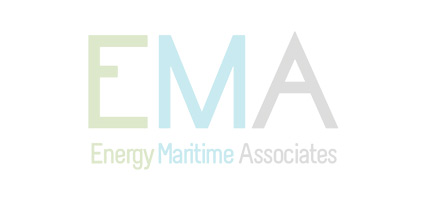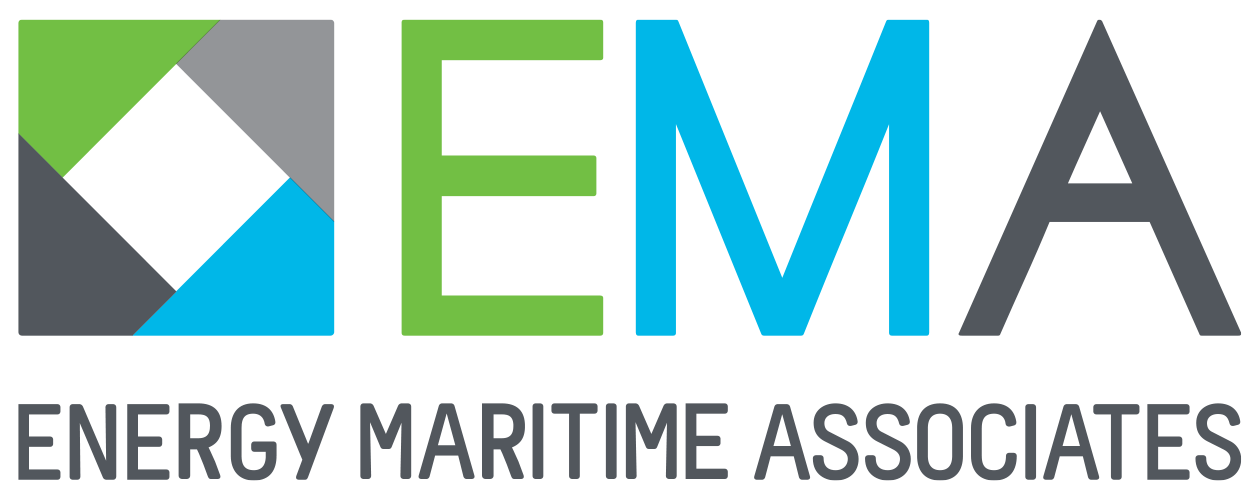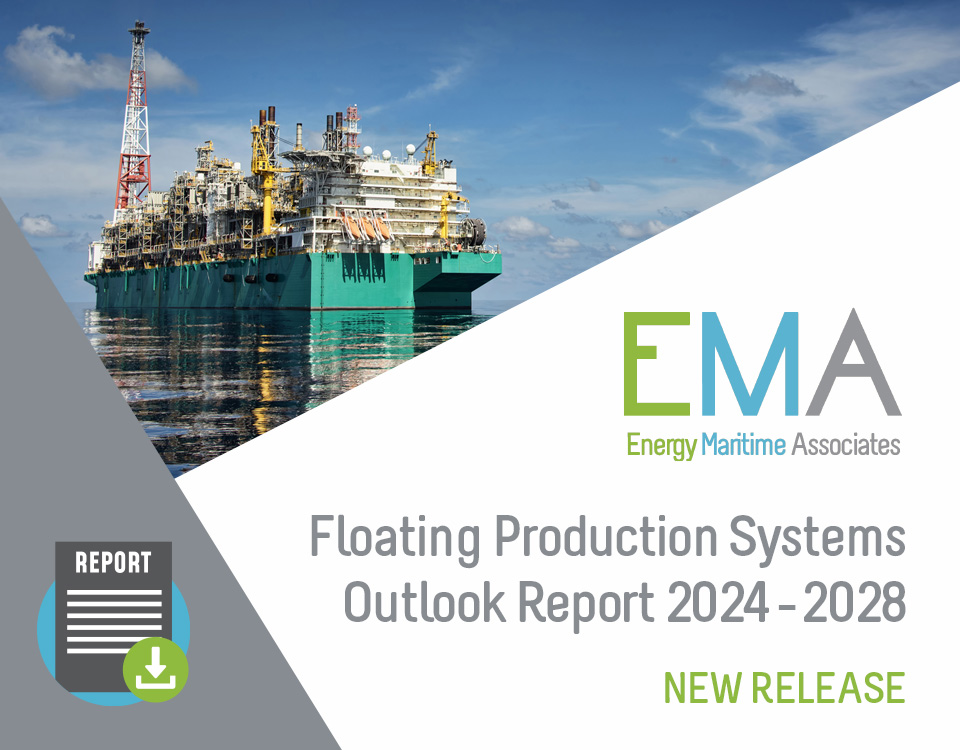2021 Market Insight from David Boggs

Participant Questions from Recent Webinar Provide a Look at Industry Challenges
EMA managing director David Boggs was recently hosted by Offshore Magazine to discuss the floating production market and business outlook for 2021.
The presentation prompted a lively round of Q&A that provides insight into topics of interest and current industry challenges. You can read the summary here.
1. Do you have any data/trending on whether the FPSO's would be mostly spread-moored versus turret-moored?
EMA has this type of detailed information and data. In general, selection of a spread-moored versus turret-moored FPSO is directly related to where the unit will be located and the surrounding weather environment. Overall, the number of spread-moored units is increasing. Most of the FPSO units being placed into deep water service, particularly offshore Brazil, and other parts of South America, are spread moored. Turret-moored units are still required for harsh environments, such as in the North Sea (UK and Norway), the South China Sea and Australasia.
2. If oil price holds up for 2021 to 2022, do you see the yard capacity in China being maxed out as it seems to be the to-go place for newbuild/conversion FPSO?
China has a large amount of capacity for FPSO newbuild construction and conversion work and it is unlikely yard capacity throughout the entire country will be maxed out. Since there is no shortage of yards or physical drydocking space to build or convert units in China, EMA would anticipate specific yards, likely the most experienced ones, such as Cosco Dalian and DSIC, to reach initial maximum capacity first. Korea is looking at getting back into the business for building large FPSOs as well, which we expect would absorb some of the project activity.
3. Digital FPSO programs: How are customers planning to use Digital solutions in their FPSO programs and what trends do you see in the next 5 years? What's the appetite for moving towards unmanned facilities?
The main drivers behind the digital solutions push and digitization of FPSOs are cost reduction, improved performance, reliability, and safety. During the next five years, EMA anticipates new and existing design tools will be used to improve efficiency, reduce rework and streamline processes. Simulation tools allow engineers to collaborate remotely before fabrication and construction takes place. Additionally, digital solutions allow for real-time feedback from operating units that can be incorporated for future units.
Facility digitalization is directly linked to improving safety and reducing cost. Offshore personnel have a higher operating cost, with a lower capital cost. Conversely, increasing digitalization (by reducing personnel) has a lower operating cost, with a higher capital cost. The appetite continues to grow for unmanned facilities in areas where it is expensive to move people offshore, such as UK, Norway, and Australia. In other areas of the world though, there is less demand for unmanned facilities.
4.What is EMA’s view on potential FPSO projects price increase due to price increase on steel material? Any forecast?
Steel prices will certainly impact FPSO cost, but for most projects the main cost drivers are engineering, project complexity, and machinery selection. For example, a large newbuilt FPSO that costs $1-2 billion may require between 50,000 tons and 100,000 tons of steel. Assuming an average steel price of $2000/ton, that comes to $100-$200 million for steel. The main drivers in the FPSO’s cost are the complex engineering, the topside equipment, and the risks that the contractors must carry.
5. Do you think that the trend towards new build will reverse, from a sustainability perspective it is better to repurpose?
Large FPSOs, with production capacity of 200,000 b/d, are typically purpose built and designed to have a 25-to-35-year life. None of these larger units are currently available for hire or repurposing. Smaller FPSOs on the other hand are better suited for repurposing. These units typically have a shorter life in the field and offer increased availability. As FPSO recycling and environmental requirements, rules and regulations become more complicated it may be more advantageous to send these units back into service.
6. In light of Covid and the drive to bring down costs as projects move to sanction, are you seeing any changes in contracting strategy between supplier and operator to get things moving?
Regarding current contracting strategies and Covid, companies are struggling with how to balance competition with getting what they want, when they want it, at the necessary price. We are seeing more repeat orders and collaboration to achieve a project that can be sanctioned.
If a client has figured out a way to work with their supply chain and contractors, it is easier if they repeat a new order and go back to the same companies that worked well with on a past project. As an example, Petrobras did not see adequate capacity in the market late last year to issue a competitive tender, so they began direct negotiations with SBM for the Buzios 6 FPSO project. Without competition, choices are limited to direct negotiation, delay sanction, or manage the project internally.
The other thing we have seen is earlier collaboration. To reach economic sanction, suppliers and operators are working together early on to reach a feasible solution, often by reducing the complexity of the unit or development.
7. How are you seeing the Environmental, Social and governance (ESG) trend – reducing greenhouse emissions - impact decision on projects moving forward, and is it impacting any design or operational considerations?
While we are not aware of any projects that have not been sanctioned as a result of ESG trends, this is certainly something that is being looked at, from the field operator to FPSO owners and down the supply chain. Bank and financiers are asking project sponsors what they are doing to address these concerns and how they are reducing their carbon footprint.
8. Do you have any trending information on any growth in "life extension" work/studies on existing FPS's due to low oil price/decreased investment?
FPS life extensions are linked to oil prices and field economics at the time when units need to have work done. Some units initially contracted for a handful of years remain active and still in production more than 20 years later. FPS life extension is dependent on oil prices at the time of when the vessel needs to be modified and when additional funding is required. In 2016 when oil prices crashed, many FPS units came off contract because the fields were no longer economic. When oil price is high, and the field is still producing it makes sense to invest in the FPS life extension. In-field extensions occur more frequently in benign environments as these units require less capital to extend their life. For harsh environment systems that need life extensions, often these units will have to return to the shipyard for extensive work or are replaced with a new unit.
9. Is this the first time that you have seen Project Management rank so highly on the list of bottlenecks? Any observations on the reasons for this?
Field development projects have become increasingly more complex and at the same time there are fewer people with experience managing construction of these production units. The combination of these factors has resulted in project delays and increased costs. Companies are now starting to realize the impact that project management has on delivery and are trying to quantify this risk. However, this is much harder to measure than running a procurement process.
EMA provides accurate and dependable market research for the Floating Production Sector. Clients tell us that our reports are a must-read for anyone requiring trustworthy analysis of the FPS sector to effect better decision making, assess business risk, and provide insight into project alternatives.
The presentation prompted a lively round of Q&A that provides insight into topics of interest and current industry challenges. You can read the summary here.



